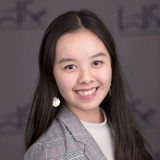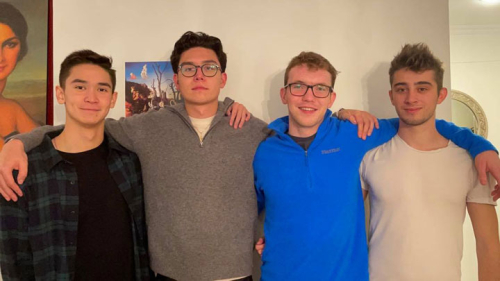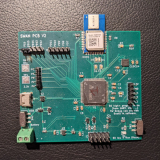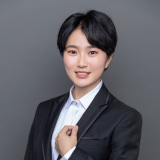Shirley Huang adopted a dog in 2019. Like many new pet owners, she found she had a lot to learn about caring for the new member of her household.

“When I first had Toby, it was really a struggle,” she recalls. The playful puppy was constantly getting into mischief. “I felt like: there’s so much information I need to understand, I just don’t know where to start.”
During the pandemic shutdown, Shirley also noticed a lot of other people in her leafy Montreal neighborhood seemed to be in the same boat. “Every single day I would see a new puppy” out for a walk with their owner.
So together with fellow engineering student Kayla Li, Shirley began exploring how to build a software platform that could help new pet owners find reliable local services: veterinarian, grooming, boarding, sitting, and the like.
Entrepreneurial skills
As their project began to take shape, the two students decided to apply for support from a Faculty of Engineering program that helps students jump-start technologically based ideas with business or social-impact potential.
TechAccel grant recipients such as Shirley and Kayla benefit from personalized coaching and business mentorship by an industry expert. An added bonus: the students get recognition under their Co-Curricular Record, since TechAccel is an approved Enriched Educational Opportunities (EEO) program. The program is one of several at McGill that encourage students to cultivate entrepreneurial skills.
Over the last six years, over $176,000 in TechAccel grants have been distributed from the Faculty of Engineering’s Engine Innovation Fund to support student early-stage ventures. “We’ve trained over 165 innovators and entrepreneurs via 54 TechAccel teams that have gone through our program, and 76% are still active with their ventures,” says Katya Marc, Associate Director of the McGill Engine Centre. “Through the teams’ self-efficacy surveys before and after the program, we’ve seen an increase of 25% in their entrepreneurial skills and 12% growth in their innovation skills.”
Since last winter, nine student teams have used TechAccel grants to pursue a wide variety of projects. Among them: an app to help students find off-campus apartments; smart waste-bins designed to help McGill work towards its Zero-Waste by 2035 target; and smart technologies to help high-performance athletes train more effectively. (All of these early-stage ventures were showcased on Sept. 30 as part of this year’s virtual homecoming.)
Here is a look at two of the teams’ projects:
SWAM
Late last year, David Brenken and three of his buddies on the McGill varsity swim team got to thinking about a better way to help high-performance swimmers refine their techniques.
In a sport where even tiny efficiency gains can make a big competitive difference, every little edge is crucial. Underwater video cameras can help coaches and swimmers analyze form and identify flaws. But David and his three teammates noticed there were limits to the technology.
Video analysis in all sports has its shortcomings, David explains. To get a full picture of what’s going on, multiple cameras often need to be set up. There’s the question of what camera angles work best. And if the athlete is moving around on a field of play, the entire area needs to be rigged with cameras, which can be impractical.
David is majoring in Mechanical Engineering, with a minor in Computer Science. Teammates Johan Boscher and Matt Wittmann are studying Computer Science. And Karl-Michael Aumann is a Management student.

“The four of us put our heads together” and began thinking about how to use computer technology to piece together a better system, David says. After some preliminary research, they won support from the TechAccel program, including funding and personalized business mentorship for their project, dubbed SWAM.
Wearable tech
The idea is to place a network of wearable hardware devices -- like a bunch of Fitbits or smart watches -- at different biomechanical points on the body. These wireless nodes connect to an external device, such as a laptop or tablet, to provide a real-time model of the athlete in motion.
The four undergrads worked on the project full-time throughout the summer. They used their initial grant of $1,800 to buy electronics and other equipment. Another grant enabled them to hire an intern -- a younger Engineering student who helped design the electronics portion of the prototype.

“We just finished the first prototype,” David says. “Now we’re working on the second one.” And despite diving back into full course loads and swimming practices this fall, the team isn’t slowing down. They applied and got into Centech, a Montreal tech-business incubator.
As the project advanced, the team realized the technology could work for many sports, such as track and field, gymnastics, and weightlifting. Other potential applications include medical rehabilitation, injury prevention, sports science, and motion capture for the film industry.
The team will try to identify the market segment that could provide the most support for the product early on. That could mean gearing the product to companies that are already using motion-capture technology and “can leverage our technology to add value to their current product offering,” Johan says.
PÈTIENCE

Shirley Huang, meanwhile, continues to work on her pet-care project with her friend Kayla. Both are originally from China, but Kayla graduated from McGill last year and is now studying in France. So the pair now collaborate remotely.
Their planned app for pet owners is called “Pètience” -- a blend of “pet” and “patience.”
Turning the idea into a plan and a product has provided plenty of lessons that go well beyond the bounds of their regular coursework, Shirley says. “We were two Engineering students. We had to ask ourselves, ‘How do we do the software? How do we make a marketing plan? How do we make a platform that people will actually use?”
They aim to turn Pètience into a for-profit business. One way to generate revenue may be through premium memberships, which would provide exclusive benefits such as a service for booking appointments.
Arts and aerospace
Shirley (whose Chinese given name is Guanbingxue) grew up in Guiyang, the capital of China’s Guizhou province. At the age of 15, she got a scholarship to pursue secondary-school studies in Singapore, where she lived for four years.
Shirley started at McGill in 2018. She wanted to come to Canada -- and Montreal, in particular -- after hearing about the city’s lively arts and culture scene through a family friend who had moved here. And for a student in mechanical engineering, the aerospace industry in Montreal was also a draw. (She landed an internship last year with an aerospace company.)
Three years after moving here, she’s on track to graduate next spring -- and hopes to stay on after earning her degree. “I love living in Canada and Montreal,” Shirley says.
